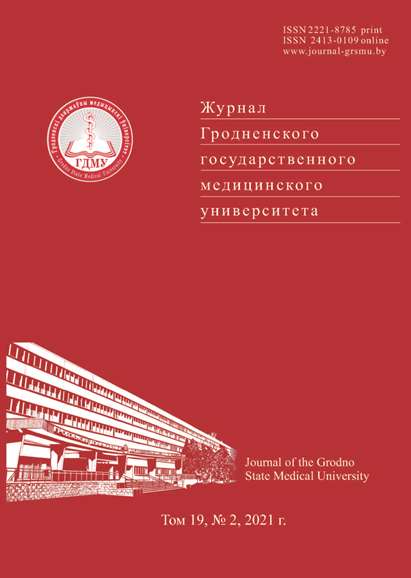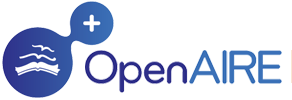СТАТИН-ИНДУЦИРОВАННЫЕ МЕХАНИЗМЫ НАРУШЕНИЙ УГЛЕВОДНОГО ОБМЕНА

Аннотация
Статины – препараты первой линии, которые используются для профилактики сердечно-сосудистых заболеваний. Они снижают риск развития инфаркта миокарда, инсульта, а также сердечно-сосудистой смерти в среднем на 25-30%. Несмотря на безопасность и относительную переносимость статинов, обсервационные, клинические исследования и мета-анализы показали, что статины могут повышать риск развития сахарного диабета 2 типа. Доказано, что статины повышают инсулинорезистентность и снижают
секрецию инсулина β-клетками поджелудочной железы.
Литература
Ostroumova OD. Statiny i saharnyj diabet: vzgljad kardiologa [Statins and diabetes mellitus: cardiologist's point of view]. Consilium Medicum. 2018;20(1):38-44. https://doi.org/10.26442/2075-1753_2018.1.38-44. (Russiаn).
Casula M, Mozzanica F, Scotti L, Tragni E, Pirillo A, Corrao G, Catapano AL. Statin use and risk of newonset diabetes: a meta-analysis of observational studies. Nutr. Metab. Cardiovasc. Dis. 2017;27(5):396-406. https://doi.org/10.1016/j.numecd.2017.03.001
Cederberg H, Stancakova A, Yaluri N, Modi S, Kuusisto J, Laakso M. Increased risk of diabetes with statin treatment is associated with impaired insulin sensitivity and insulin secretion: a 6 year follow-up study of the METSIM cohort. Diabetologia. 2015;58(5):1109-1117. https://doi.org/10.1007/s00125-015-3528-5
Jones M, Tett S, Peeters GM, Mishra GD, Dobson A. New-Onset Diabetes after Statin Exposure in Elderly Women: The Australian Longitudinal Study on Women's Health.Drugs Aging. 2017;34(3):203-209. https://doi.org/10.1007/s40266-017-0435-0
Lee J, Noh Y, Shin S, Lim HS, Park RW, Bae SK, OhE, Kim GJ, Kim JH, Lee S. Impact of statins on risk of new onset diabetes mellitus: a population-based cohort study using the Korean National Health Insurance claims database. Ther. Clin. Risk Manag. 2016;12:1533-1543. https://doi.org/10.2147/TCRM.S117150
Maki KC, Diwadkar-Navsariwala V, Kramer MW. Statin use and risk for type 2 diabetes: What clinicians should know. Postgrad. Med. 2018;130(2):166-172. https://doi.org/10.1080/00325481.2018.1402658
Crandall JP, Mather K, Rajpathak SN, Goldberg RB, Watson K, Foo S, Ratner R, Barrett-Connor E, Temprosa M. Statin use and risk of developing diabetes: Results from the Diabetes Prevention Program. BMJ Open Diabetes Res. Care. 2017;5:1-9. https://doi.org/10.1136/bmjdrc-2017-000438
Ridker PM, Pradhan A, MacFadyen JG, Libby P, Glynn RJ. Cardiovascular benefits and diabetes risks of statin therapy in primary prevention: an analysis from the JUPITER trial. Lancet. 2012;380(9841):565-571. https://doi.org/10.1016/S0140-6736(12)61190-8
Agarwala A, Kulkarni S, Maddox T. The Association of Statin Therapy with Incident Diabetes: Evidence, Mechanisms, and Recommendations. Curr. Cardiol. Rep. 2018;20(7):50. https://doi.org/10.1007/s11886-018-0995-6
Mills EJ, Wu P, Chong G, Ghement I, Singh S, Akl EA, Eyawo O, Guyatt G, Berwanger O, Briel M. Efficacy and safety of statin treatment for cardiovascular disease: а network meta-analysis of 170, 255 patients from 76 randomized trials. QJM. 2011;104(2):109-124. https://doi.org/10.1093/qjmed/hcq165
Navarese EP, Buffon A, Andreotti F, Kozinski M, Welton N, Fabiszak T, Caputo S, Grzesk G, Kubica A, Swiatkiewicz I, Sukiennik A, Kelm M, De Servi S, Kubica J. Meta-analysis of impact of different types and doses of statins on new-onset diabetes mellitus. Am. J. Cardiol. 2013;111:1123-1130. https://doi.org/10.1016/j.amjcard.2012.12.037
Betteridge DJ, Carmena R. The diabetogenic action of statins-mechanisms and clinical implications. Nat. Rev. Endocrinol. 2016;12(2):99-110. https://doi.org/10.1038/nrendo.2015.194
Carter AA, Gomes T, Camacho X, Juurlink DN, Shah BR, Mamdani MM. Risk of incident diabetes among patients treated with statins: рopulation based study. BMJ. 2013;346:2610. https://doi.org/10.1136/bmj.f2610
Wang S, Cai R, Yuan Y, Varghese Z, Moorhead J, Ruan XZ. Association between reductions in low-density lipoprotein cholesterol with statin therapy and the risk of new-onset diabetes: a meta-analysis. Sci. Rep. 2017;7:39982. https://doi.org/10.1038/srep39982
Laakso M, Kuusisto J, Stancakova A, Kuulasmaa T, Pajukanta P, Lusis AJ, Collins FS, Mohlke KL, Boehnke M. The Metabolic Syndrome in Men study: a resource for studies of metabolic and cardiovascular diseases. J. Lipid Res. 2017;58(3):481-493. https://doi.org/10.1194/jlr.O072629
Brault M, Ray J, Gomez YH, Mantzoros CS, Daskalopoulou SS. Statin treatment and new-onset diabetes: a review of proposed mechanisms. Metabolism. 2014;63(6):735-745. https://doi.org/10.1016/j.metabol.2014.02.014
Wang HJ, Park JY, Kwon O, Choe EY, Kim CH, Hur KY, Lee MS, Yun M, Cha BS, Kim YB, Hyangkyu L, Kang ES. Chronic HMGCR/HMG-CoA reductase inhibitor treatment contributes to dysglycemia by upregulating hepatic gluconeogenesis through autophagy induction. Autophagy. 2015;11(11): 2089-2101. https://doi.org/10.1080/15548627.2015.1091139
Zhao W, Zhao SP. Different effects of statins on induction of diabetes mellitus: an experimental study. Drug Des Devel Ther. 2015;9:6211-6223. https://doi.org/10.2147/DDDT.S87979
Braun M, Ramracheya R, Bengtsson M, Zhang Q, Karanauskaite J, Partridge C, Johnson PR, Rorsman P. Voltage-gated ion channels in human pancreatic betacells: Electrophysiological characterization and role in insulin secretion. Diabetes. 2008;57(6):1618-1628. https://doi.org/10.2337/db07-0991
Jahanshahi P, Wu R, Carter JD, Nunemaker CS. Evidence of diminished glucose stimulation and endoplasmic reticulum function in nonoscillatory pancreatic islets. Endocrinology. 2009;150(2):607-615. https://doi.org/10.1210/en.2008-0773
Galicia-Garcia U, Jebari S, Larrea-Sebal A, Uribe KB, Siddiqqi H, Ostolaza H, Benito-Vicente A, Martin S. Statin Treatment-Induced Development of Type 2 Diabetes: From Clinical Evidence to Mechanistic Insights. Int. J. Mol. Sci. 2020;21(13):4725. https://doi.org/10.3390/ijms21134725
Fridlyand LE, Tamarina N, Philipson LH. Bursting and calcium oscillations in pancreatic beta-cells: Specific pacemakers for specific mechanisms. Am J Physiol Endocrinol Metab. 2010;299(4):517-532. https://doi.org/10.1152/ajpendo.00177.2010
Ashcroft FM, Rorsman P. K(ATP) channels and islet hormone secretion: New insights and controversies. Nat. Rev. Endocrinol. 2013;9(11):660-669. https://doi.org/10.1038/nrendo.2013.166
Geisler JC, Corbin KL, Li Q, Feranchak AP, Nunemaker CS, Li C. Vesicular nucleotide transporter-mediated ATP release regulates insulin secretion. Endocrinology. 2013;154(2):675-684. https://doi.org/10.1210/en.2012-1818
Yada T, Nakata M, Shiraishi T, Kakei M. Inhibition by simvastatin, but not pravastatin, of glucose-induced cytosolic Ca2+ signalling and insulin secretion due to blockade of L-type Ca2+ channels in rat islet beta-cells. Br. J. Pharm. 1999;126:1205-1213. https://doi.org/10.1038/sj.bjp.0702397
Sadighara M, Amirsheardost Z, Minaiyan M, Hajhashemi V, Naserzadeh P, Salimi A, Seydi E, Pourahmad J. Тoxicity of Atorvastatin on Pancreas Mitochondria: a Justification for Increased Risk of Diabetes Mellitus. Basic Clin. Pharmacol. Toxicol. 2017;120(2):131-137. https://doi.org/10.1111/bcpt.12656
Curry L, Almukhtar H, Alahmed J, Roberts R, Smith PA. Simvastatin Inhibits L-Type Ca2+-Channel Activity Through Impairment of Mitochondrial Function. Toxicol. Sci. 2019;169(2):543-552. https://doi.org/10.1093/toxsci/kfz068
Baudry A, Leroux L, Jackerott M, Joshi RL. Genetic manipulation of insulin signaling, action and secretion in mice. Insights into glucose homeostasis and pathogenesis of type 2 diabetes. EMBO Rep. 2002;3(4):323-328. https://doi.org/10.1093/embo-reports/kvf078
Zhou J, Li W, Xie Q, Hou Y, Zhan S, Yang X, Xu X, Cai J, Huang Z. Effects of simvastatin on glucose metabolism in mouse MIN6 cells. J. Diabetes Res. 2014;2014:376570. https://doi.org/10.1155/2014/376570
Kruit JK, Brunham LR, Verchere CB, Hayden MR. HDL and LDL cholesterol significantly influence beta-cell function in type 2 diabetes mellitus. Curr. Opin. Lipidol. 2010;21(3):178-185. https://doi.org/10.1097/MOL.0b013e328339387b
Metz SA, Rabaglia ME, Stock JB, Kowluru A. Modulation of insulin secretion from normal rat islets by inhibitors of the post-translational modifications of GTP-binding proteins. Biochem. J. 1993;295(Pt 1): 31-40. https://doi.org/10.1042/bj2950031
Sun B, Zhong Z, Wang F, Xu J, Xu F, Kong W, Ling Z, Shu N, Li Y, Wu T, Zhang М, Zhu L, Liu Х, Liu L. Atorvastatin impaired glucose metabolism in C2C12 cells partly via inhibiting cholesterol-dependent glucose transporter 4 translocation. Biochem. Pharmаcol. 2018;150:108-119. https://doi.org/10.1016/j.bcp.2018.01.021
Kain V, Kapadia B, Misra P, Saxena U. Simvastatin may induce insulin resistance through a novel fatty acid mediated cholesterol independent mechanism. Sci. Rep. 2015;5:13823. https://doi.org/10.1038/srep13823
Ling Z, Shu N, Xu P, Wang F, Zhong Z, Sun B, Li F, Zhang M, Zhao K, Tang X, Wang Zh, Zhu L, Liu L, Liu Х. Involvement of pregnane X receptor in the impaired glucose utilization induced by atorvastatin in hepatocytes. Biochem. Pharmаcol. 2016;100:98-111. https://doi.org/10.1016/j.bcp.2015.11.023
Hatting M, Tavares CDJ, Sharabi K, Rines AK, Puigserver P. Insulin regulation of gluconeogenesis. Ann. N. Y. Acad. Sci. 2018;1411(11):21-35. https://doi.org/10.1111/nyas.13435
Fernandez-Hernando C, Ramirez CM, Goedeke L, Suarez Y. MicroRNAs in metabolic disease. Arterioscler. Thromb. Vasc. Biol. 2013;33(2):178-185. https://doi.org/10.1161/ATVBAHA.112.300144




























